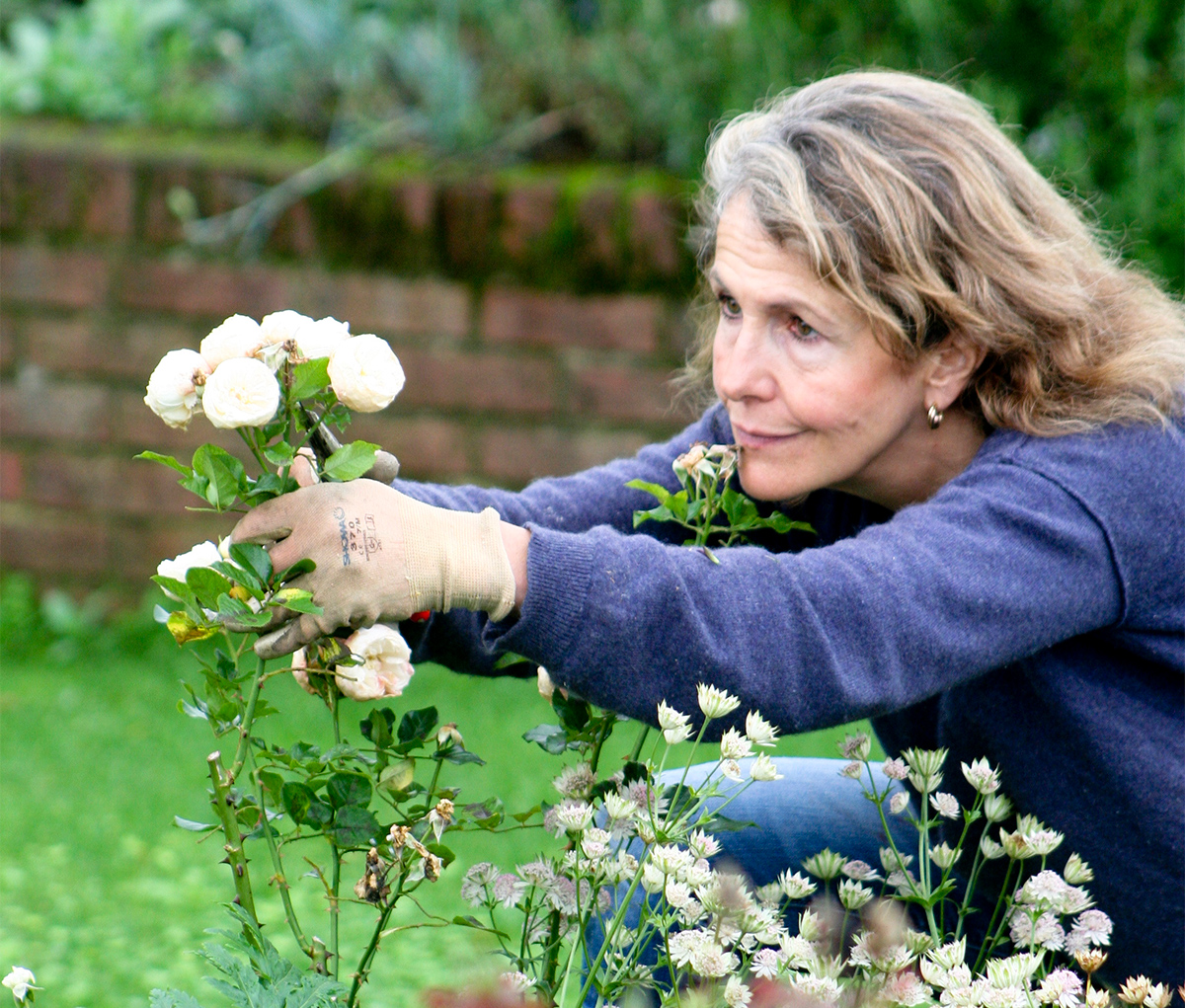We use cookies to make your experience better. Read more
How to Plant New Roses

February or early March are the perfect times to plant new roses. At The Real Flower Company, our scented English garden roses are our pride and joy, and we grow some 30,000 bushes on our sustainable Hampshire farm. So you can be assured that we know what we are talking about when it comes to all things rosy!.
We supply three of our favourite roses in pots. Margaret Merril, with its stunning aroma, beautiful shape and creamy petals, was the bloom that inspired our founder Rosebie Morton to set up The Real Flower Company in the first place, launching her mission to grow scented English garden roses as nature intended. Chandos Beauty, described by Rosebie as her ‘perfect child’, has peachy petals and a resilience that makes it our farm manager Rob Marsden’s all-time favourite. And A Whiter Shade of Pale is loved for its delicate pink petals and sweet fragrance.

If you are thinking of buying new roses – either in pots or as bare-root plants – we would like to pass on our wisdom and advice about the best way to give them a healthy start in life. So here are Rosebie and Rob’s top tips…
Choosing a plant
Roses have long roots so they should come in tall pots: roots in shallow containers that have been bent upwards will never recover. Look for plants that have at least three decent-sized, strong branches emerging from the base and are open in the centre – the perfect rose bush has a shape akin to a wine glass.
Bare-root roses are usually cheaper than plants in pots. Bare-root roses should be planted out immediately, but those in sizeable pots, such as ours, can be left for up to a year.
If your plant looks ungainly when it arrives, prune all the main branches to approximately the same height. You can find our tips on how to prune in our blog post here.
Planting roses in a pot
Make sure your pot is big enough to contain the plant’s roots comfortably without bending them. If necessary, trim the roots – it’s better to chop off some root than to distort it. Fibrous roots are the vital ones, so cutting off dormant roots will do no harm. But don’t trim more than necessary – consider instead that you might need a bigger pot.
Start off by putting a layer of flints, stones or crocks in the bottom of the pot to help the soil to drain and stop the roots from becoming waterlogged. Then place the rose in the pot and fill around it with compost enriched with fertiliser. Most potting compost has only enough food for a month, but roses are hungry feeders and need slow-release food over at least six months. On the farm we use so Vitax Q4, which is a great fertiliser for any plant or tree. If your rose is grafted – a rose grown on a hardier rootstock – cover the union with at least 5 centimetres of soil. The soil will sink down into the pot over time and the graft should never be exposed.
You will need to replace the top 5 to 8 centimetres with fresh compost and fertiliser each year and replace all the compost every three years.
Planting roses in the ground
You should choose a frost-free day to plant your roses and if you are moving a rose from a pot, soak it in a bucket of water for at least an hour before transplanting. Almost all roses require at least four hours of sun or direct light each day, so pick a sunny spot for your plant.
The care you take in planting your rose bush is akin to laying the foundations for a house – good foundations will ensure lifelong stability. So the hole you dig should be at least 50 centimetres deep with a diameter at least twice the width of the roots. Take care not to bend the roots upwards as you lower the rose into the hole – if necessary, trim them rather than squash them.
Fill the hole around the rose with compost enriched with fertiliser such as Vitax Q4 and if you are planting a grafted rose, ensure you have at least 5 centimetres of soil above the union of rose and rootstock.
All our potted roses are grown on our Hampshire farm. They can either be planted out when they arrive at your door or kept in their pots until you are ready to plant them out. To find out more about The Real Flower Company’s rose plants, you can browse our collection here.


